"If you haven’t yet familiarized yourself with the Big Dipper constellation, the night sky will forever appear as a jumble of twinkling lights. "
"Currently, astronomy is not a mandatory subject in schools and is instead offered as an elective."
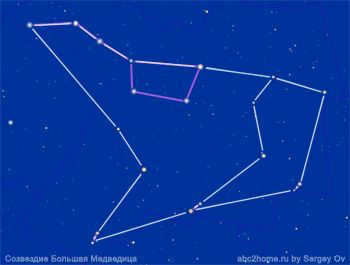
Figure 1 shows a diagram of the constellation of the Big Dipper.
Ursa Major, also known as the Big Dipper, is the most prominent constellation in the Northern Hemisphere and the third largest in terms of angular area among all constellations in the sky [1]. It is also the progenitor of a group of constellations that share its name.
As one of the largest constellations, the Big Dipper shares its borders with eight other constellations: Canes Venatici, Draco, Camelopardalis, Lynx, Leo Minor, Leo, Coma Berenices, and Ursa Minor.
In Russia, the Big Dipper is a circumpolar constellation, meaning it never sets and can be used as a celestial clock [2].
Stars and diagram representing the Big Dipper constellation
The constellation known as the Big Dipper is the most prominent and easily recognizable constellation in the northern hemisphere. It contains a total of seven stars that are brighter than the third magnitude, including Epsilon of the Big Dipper (ε UMa; 1.76 m ), Aliot α UMa, Dubhe η UMa, Benetnash ζ UMa, Mitzar β UMa, Merak, and Fekda (γ UMa; 2.41 m ). There is also a disputed star called Tai Tsung (Fig. 2) within the Big Dipper constellation.
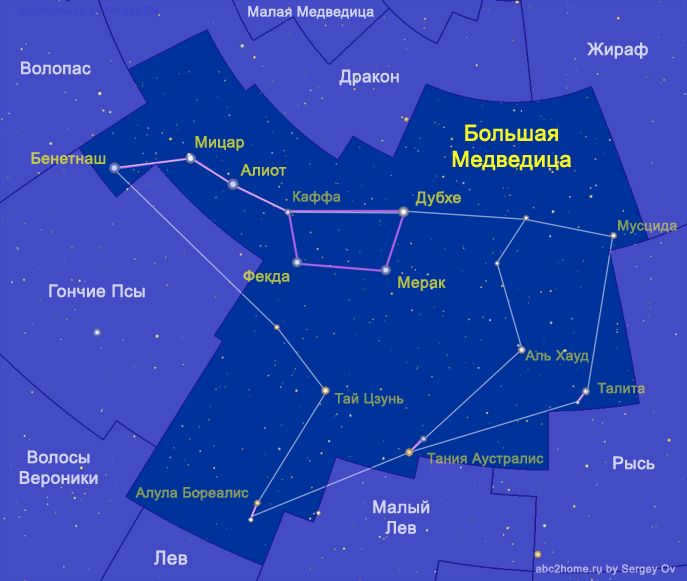
The Big Dipper constellation, stars in the Big Dipper constellation
Sergey Ov
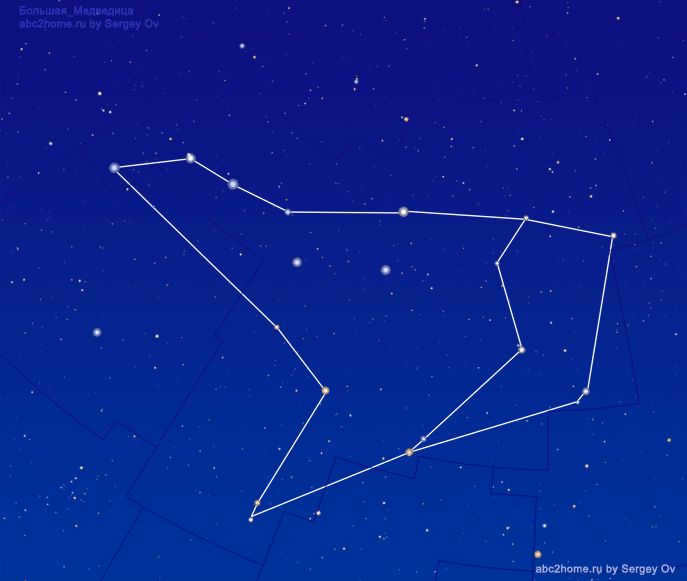
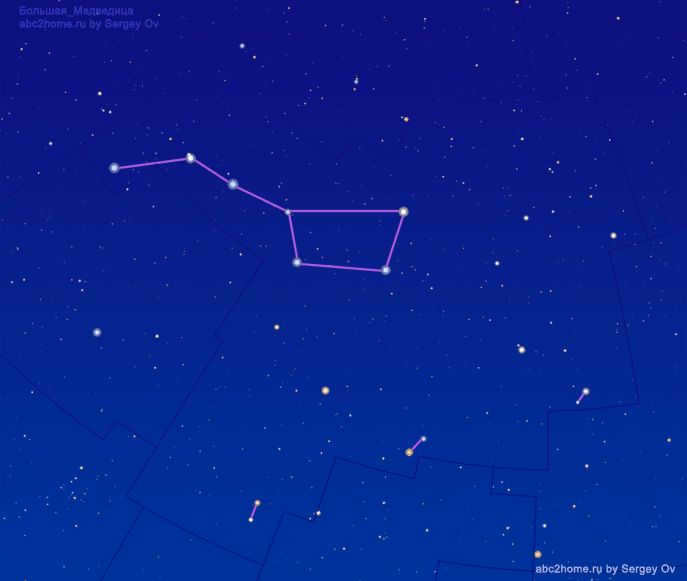
Constellation of the Ursa Major, stars of the Ursa Major constellation
Sergey Ov
Fig. 3 Diagram of the Ursa Major constellation. Diagram by stars (contour image) of the polar bear (This highly successful diagram of the constellation was suggested by X. Rey. It inspired efforts to create their own constellation diagrams).
Asterisms Big Bucket and Gazelle Leaps – hover over with JavaScript enabled
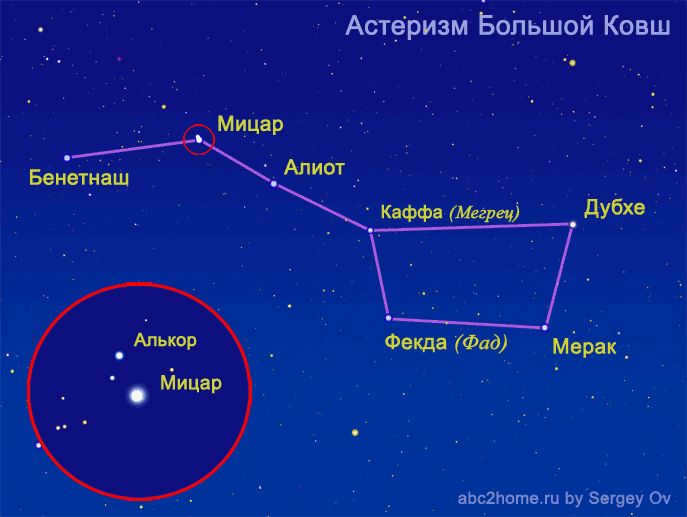
Tips for locating the Big Dipper constellation
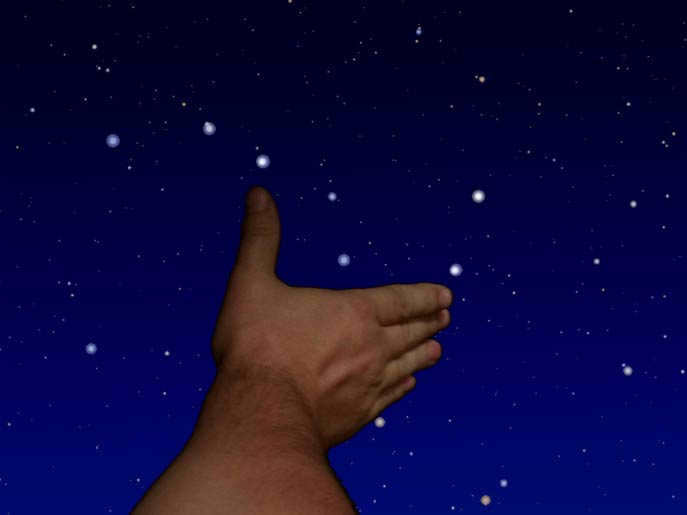
Table A.
Visible position of the Large Spoon in Moscow at 23:00 local time
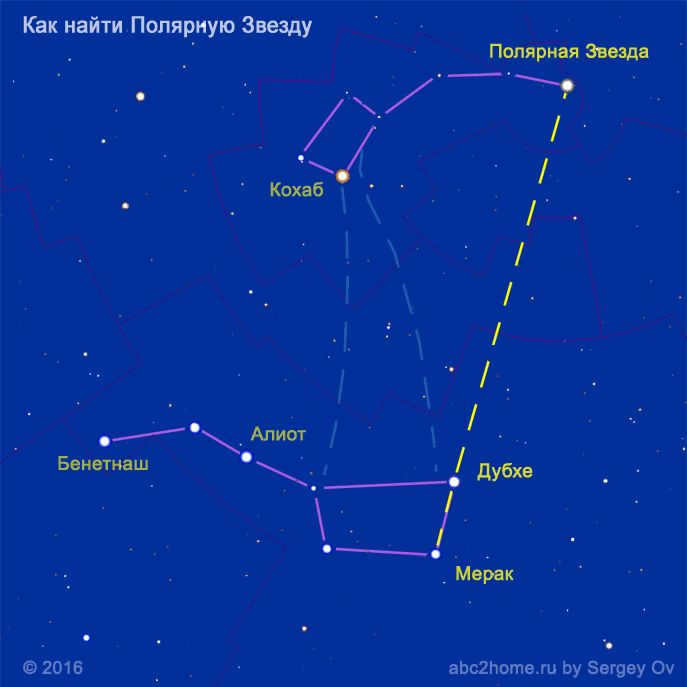
The origin and legends of the Big Dipper constellation
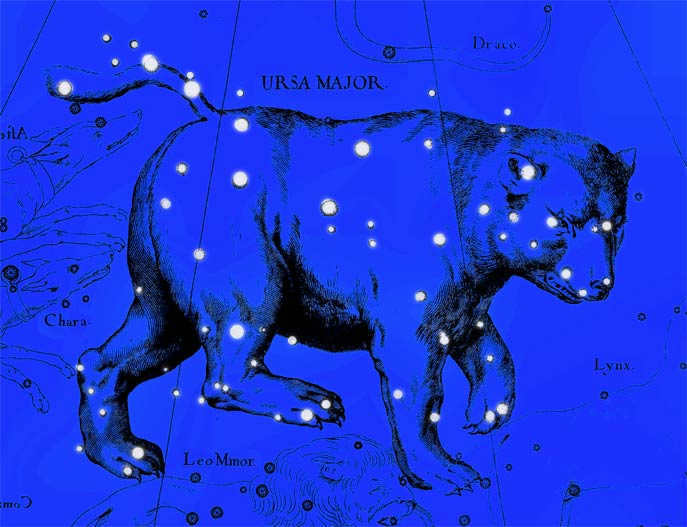
List of notable and visible stars of the Ursa Major constellation
Notes:
1. Bayer’s signs (ε Leo), as well as Flemsteed’s numbering (54 Leo) and Draper’s catalog (HD 94402) are utilized to identify the stars.
2. Notable stars encompass even those that cannot be perceived without the assistance of optical instruments, but have been discovered to possess planets or other characteristics.
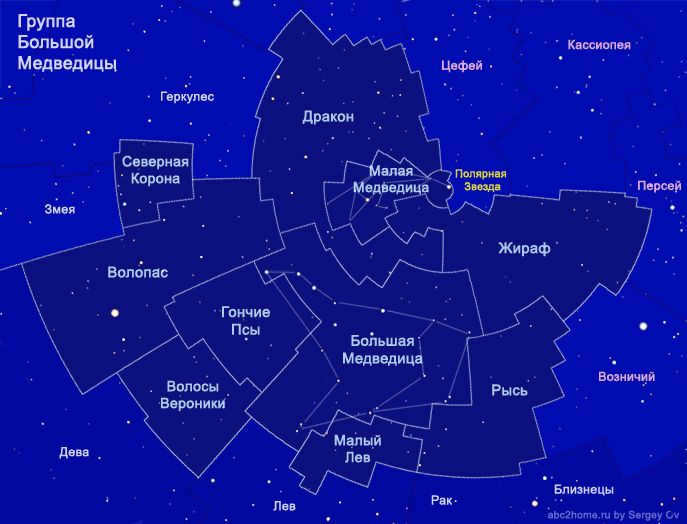
NAVIGATION AND MARKETING
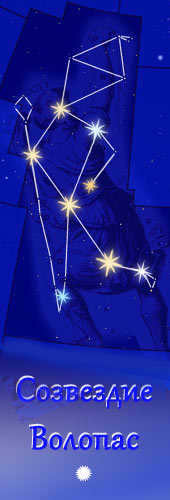
How to locate constellations and stars? Here are some popular ones to look for:
- The Big Dipper.
- The Little Dipper.
- Cassiopeia.
- Cepheus.
- Andromeda.
- Perseus
- Orion
- Swan
- Lyre
- Eagle
- Giraffe
- Wolopassus
- Leo – constellation
- Virgo
- Libra
- Scorpio
- Sagittarius
- Capricorn
- Aquarius – constellation
- ♪ Pisces is a constellation ♪
- constellation Aries
- Taurus – constellation
A B C 2 home . ru
2023 Moon Calendars for Gardeners: Weather Updates, Latest News, Videos, and Pictures

Have you ever taken a moment to contemplate the stars? If it’s been a while, now is the perfect opportunity to relive that experience. And for those who seek more than just beauty in the night sky, the MagadanMedia editorial team, citing the online magazine Meteoweb.ru, has compiled a helpful guide to locating six renowned constellations.
Discovering Ursa Major and Ursa Minor
Locating Ursa Major
This collection of stars can be seen towards the northwest during the summer, north during the fall, northeast in the winter, and directly above in the spring.
Locating Ursa Minor
To pinpoint Ursa Minor, imagine a line connecting the two outermost stars of Ursa Major (refer to the diagram below). This line will intersect with the first star, which shines with a similar intensity to the stars in the “bucket” – Polaris. Polaris can be found in the “tail” of Ursa Minor. Once you locate it, you can easily spot all the other stars in the “little bucket”.
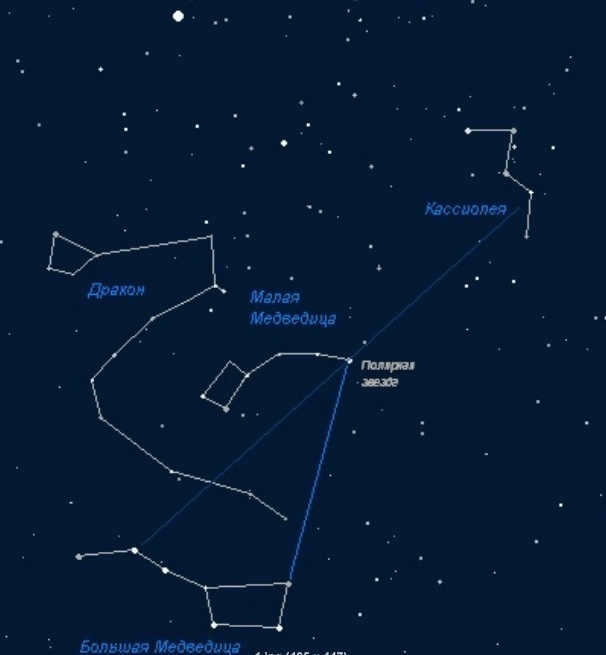
Constellations. Photo: meteoweb.ru
Cassiopeia and the Dragon
How to locate Cassiopeia
Take a look at the second star from the end of the handle of the Big Dipper – the star Mizar (refer to the image below). Visualize a straight line extending from Mizar through Polaris and continuing for the same distance. You will come across a brilliant constellation in the shape of the letter W. This is Cassiopeia.
How to find the Dragon
This constellation is situated directly between the Big and Little Bears. To locate it, simply find the two “buckets”.

Constellations. Photo: meteoweb.ru
The constellations known as the Big and Little Bears, Cassiopeia, and the Dragon can be seen in the Northern sky. These constellations are particularly visible in the European territory of the former USSR due to their close proximity to the North Pole. What makes them interesting is that they are always visible and do not set below the horizon.
Lyra and Cepheus
Where to locate Lyra
To locate the constellation Lyra, look for the brightest star in the northern hemisphere of the sky, Vega. It is most visible in September and August, appearing high above the horizon in the southwestern and then western parts of the sky. Vega is situated close to the “head” of the constellation Draco, which consists of four trapezoidal stars.
Imagine a straight line extending from the outermost star of the Big Dipper (known as Dubhe) through the head of Draco (refer to the picture below). Vega will be found along this straight line, accompanied by several faint stars nearby. Together, these stars form a shape resembling a parallelogram, which represents the constellation Lyra.
How to locate Cepheus
The constellation Cepheus bears a striking resemblance to a floating house with a pitched roof amidst the vast expanse of the Milky Way. Cepheus can be easily located with the guidance of the nearby constellations Dragon and Cassiopeia, as it is positioned between them. Notably, the apex of the house’s roof points slightly towards Polaris, the North Star.
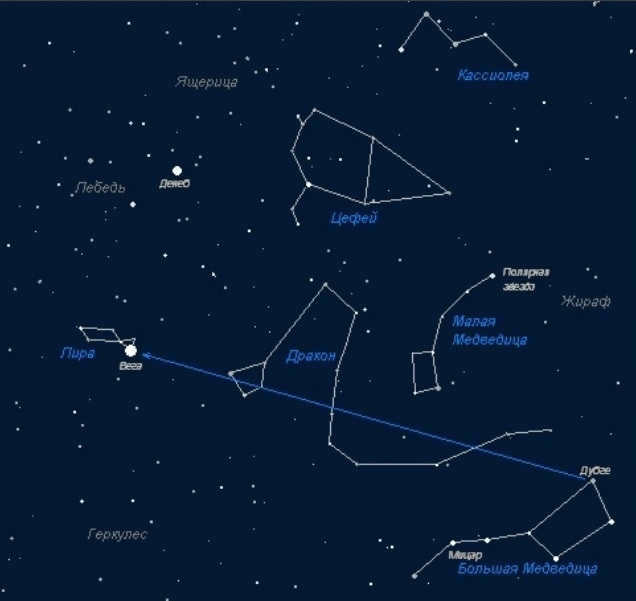
Constellations. Photo: meteoweb.ru
Cepheus is one of the constellations near the North Pole, and the brightest star in the northern hemisphere of the sky is Vega, which belongs to the constellation Lyra.
The Day of Astronomy was started by an American named Doug Berger. He was a passionate amateur astronomer who wanted to make astronomy accessible to as many people as possible. In 1973, Berger and his friends set up multiple telescopes at a busy intersection in a city. A crowd of curious bystanders quickly gathered around them. Berger’s idea of popularizing astronomy was well-received, and as a result, this holiday became national and then international.
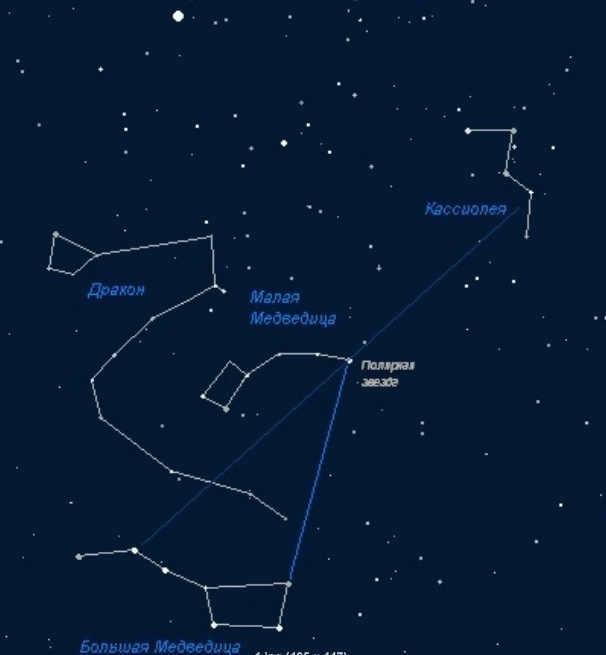
As evident, this constellation comprises of 7 stars. When connected in a linear fashion, they form a shape resembling a bucket with a handle. Each individual star possesses its own unique designation. Situated at the pinnacle of the bucket, directly opposite the handle, resides a star known as Dubhe. It ranks as the second most luminous among its celestial peers. Interestingly, Dubhe is a multiple star, meaning that from Earth, several stars appear as a single entity due to their close proximity to one another.
Watch the Video
The Story of the Big Dipper
There exists a timeless tale from Greek mythology that explains the origins of the constellation known as the Big Dipper.
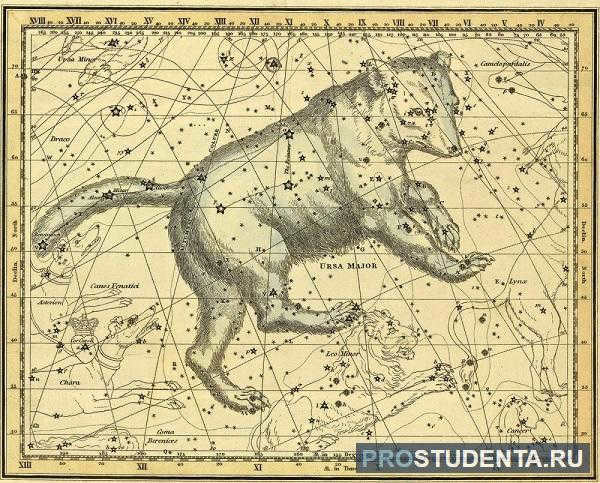
Callisto, the daughter of King Lycaon, was a nymph of extraordinary beauty and served Artemis faithfully. However, Zeus, captivated by her allure, disguised himself as Artemis and seduced her. When the real Artemis discovered Callisto’s pregnancy during a bath, she became furious and banished her beloved nymph. Distraught and alone, Callisto sought refuge in the mountains, where she gave birth to her son Arkas.
The primary deity prohibited his offspring from carrying out a horrific act, yet he was unable to annul the spell bestowed upon him by the Champion. Showcasing mercy towards the hapless Callisto, Zeus transformed her and her offspring into celestial bodies and dispatched them to the heavens. Consequently, the Ursa Major constellation materialized in the firmament, with the Ursa Minor constellation residing alongside her progeny.
Ancient Depictions of the Big Dipper Constellation
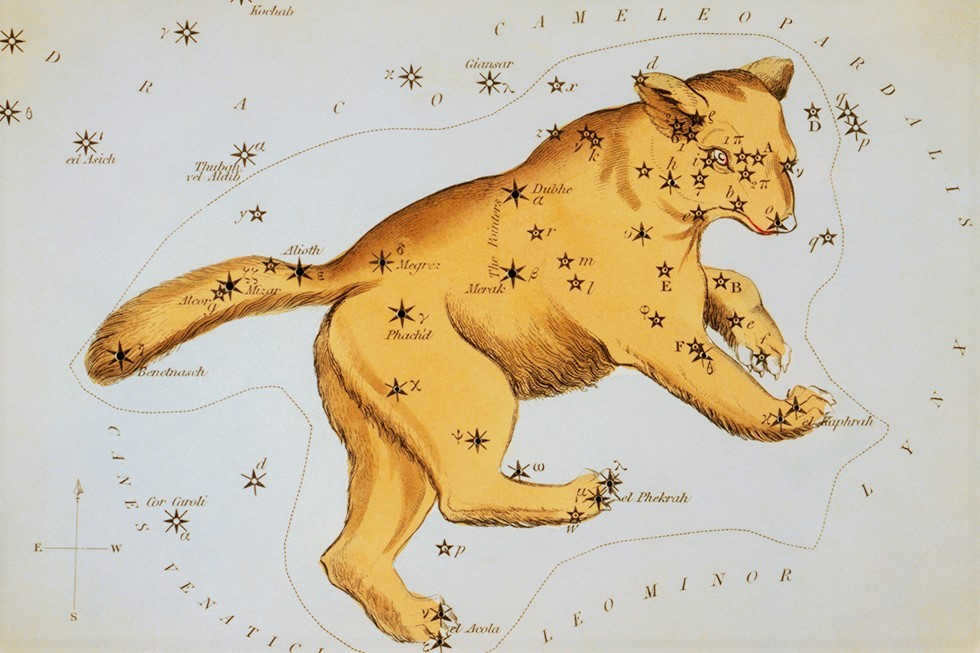
Among the most ancient constellations in existence, the Big Dipper holds a prominent place, having been referenced by nearly all civilizations throughout history. The earliest known records of this celestial grouping can be traced back to ancient India, where it was known as “Sapta Rishi” meaning “seven sages”. This name was given due to the seven primary stars that form the shape of a bucket. The Chinese also recognized this constellation and even used its position in the sky to determine time.
The Native Americans also recognized the bear in this constellation, although they believed that the bear was represented by only four stars arranged in the shape of a trapezoid. Additionally, they saw three hunters chasing after the bear, with Aliot leading the way and holding a bow, Mitzar carrying a cauldron, and Benetnash bringing up the rear with a pile of brushwood for starting a fire.
Observation of the summer star groups
On the opposite side of Polaris (in relation to the constellation of the Big Dipper), there exists a group of stars known as Cassiopeia. This group is composed of five bright stars that form a shape resembling the letter “W” in the Latin alphabet. These five stars are the most luminous in Cassiopeia. Adjacent to these stars are other, less luminous stars that also belong to the Cassiopeia constellation; the same can be said of the less luminous stars in all other star groups.
Within the Cassiopeia constellation, there is a radiant, silvery band – the Milky Way.. If we follow this band across the sky in the direction of the Little Dipper, we will come across a star group known as the Swan. This group is sometimes referred to as the Cross. due to the resemblance of its brightest stars to this shape.
Beneath the Swan, within the Milky Way, we discover the Eagle constellation which contains a luminous white star known as Altair according to the Arab tradition. By forming a triangle with these two constellations, we can observe the small Lyra constellation which features a remarkably bright blue star named Vega.
These three constellations are most visible during the summer and autumn seasons in the early evening.
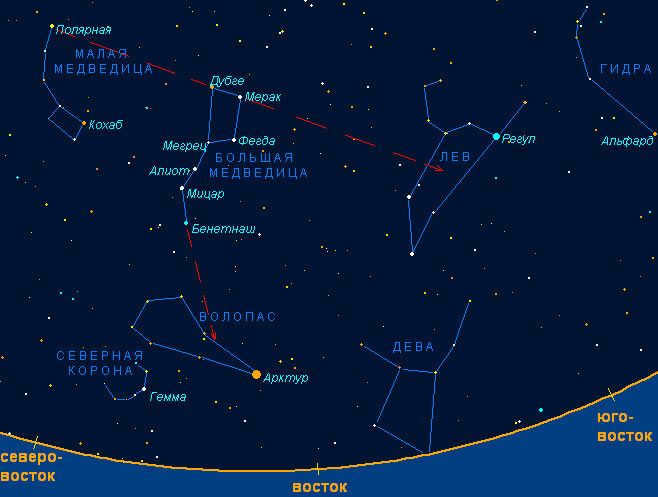

An ordinary image of the summer sky in the northern hemisphere of the Earth: including Ursa Major, Ursa Minor, Leo, Bootes, and Corona Borealis
The Mysteries of Ursa Major: Its Interpretations across Various Cultures
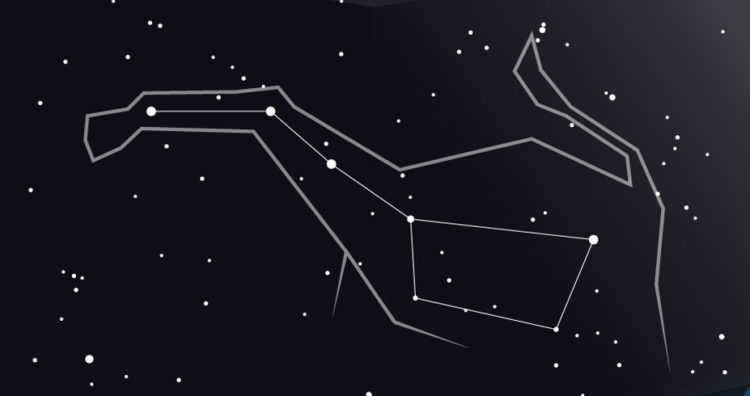
The ancient Egyptians were pioneers in the field of astronomy, and their round stone “observatories” from as early as the fifth millennium B.C. have left a lasting impact. It was the Egyptians who established the foundation for the constellation system, which was later adopted by medieval inhabitants, the Greeks, the Arabs, and eventually modern science. During that ancient era, the Earth’s axis pointed towards Alpha of the Dragon (Tuban) rather than Polaris due to the precession. The Egyptians regarded this vicinity, along with the nearby stars, as the “fixed sky,” which they believed to be the abode of the gods. Instead of seeing the Big Dipper, the priests could observe the foot of Seth, the god of war and death, who transformed into a bull and killed Osiris with a powerful hoof strike. In retaliation for his father’s murder, the falcon-headed god Horus severed Seth’s limb.
China’s “Emperor Shandi’s Carriage”
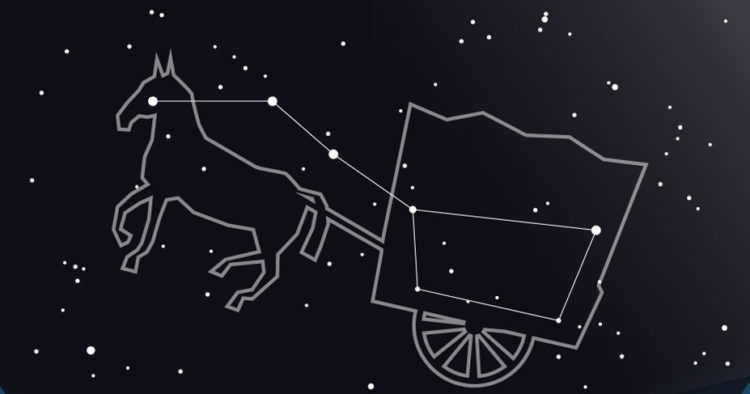
The Seven Sages of India
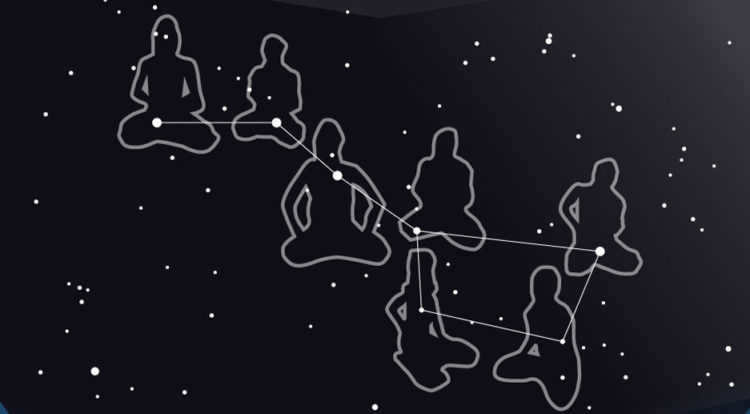
While mathematics flourished in ancient India, observational astronomy did not reach the same level of brilliance. It was heavily influenced by Greek and Chinese ideas. For example, the concept of the 27-28 “stands” (nakshatras) through which the Moon passes in about a month bears a striking resemblance to the Chinese lunar “houses”. The Hindus also placed great significance on Polaris, which the Vedas experts believed to be the dwelling place of Vishnu himself. The asterism known as the Bucket, located below Polaris, was considered to be Saptarisha – the seven sages who were born from Brahma’s mind and are considered the ancestors of our current era, Kali-yuga, and all living beings within it.
Greece’s “Great Bear.”
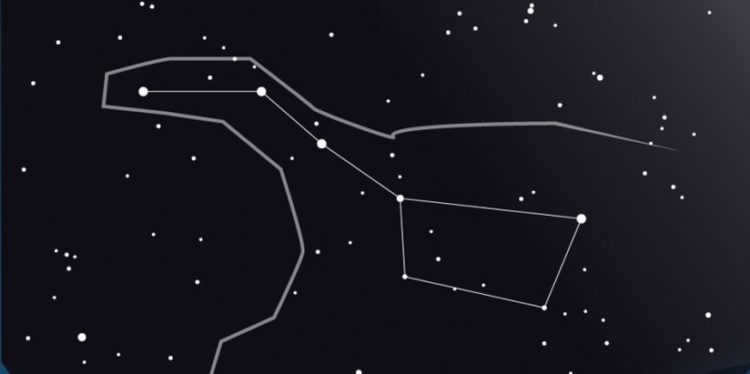
America’s Majestic Grizzly
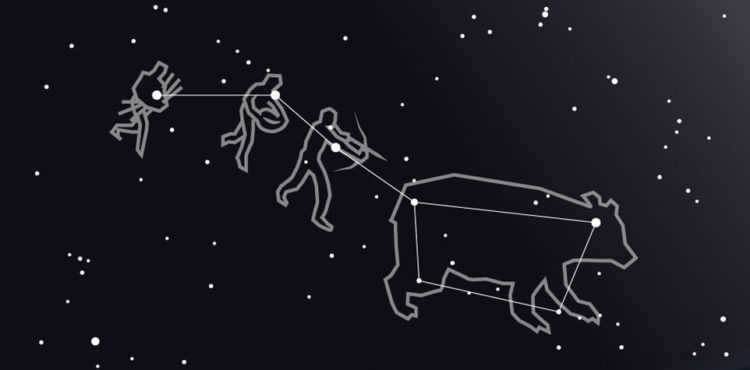
It appears that the Native Americans had a unique understanding of wild creatures: according to the Iroquois tale of the asterism’s origin, the “celestial bear” lacks a tail. The trio of stars that form the ladle’s handle represent three hunters in pursuit of the beast: Aliot wields a bow with an arrow, Mitzar carries a cauldron for cooking meat (Alcor), and Benetnash carries a bundle of kindling to ignite the hearth. During autumn, as the Bucket rotates and descends towards the horizon, blood trickles from a wounded bear, staining the trees with a patchwork of colors.
Optimal times for observing the Big Dipper
The Big Dipper can be observed year-round during the night in temperate latitudes. The best conditions for astronomical observations occur in the spring when the constellation is positioned high in the sky. During summer nights, the Big Dipper is still easily visible, although its visibility diminishes significantly north of Moscow due to the bright sky. In the fall, the visibility of the constellation is at its lowest point.
Getting Oriented Using the Big Dipper’s Ladle
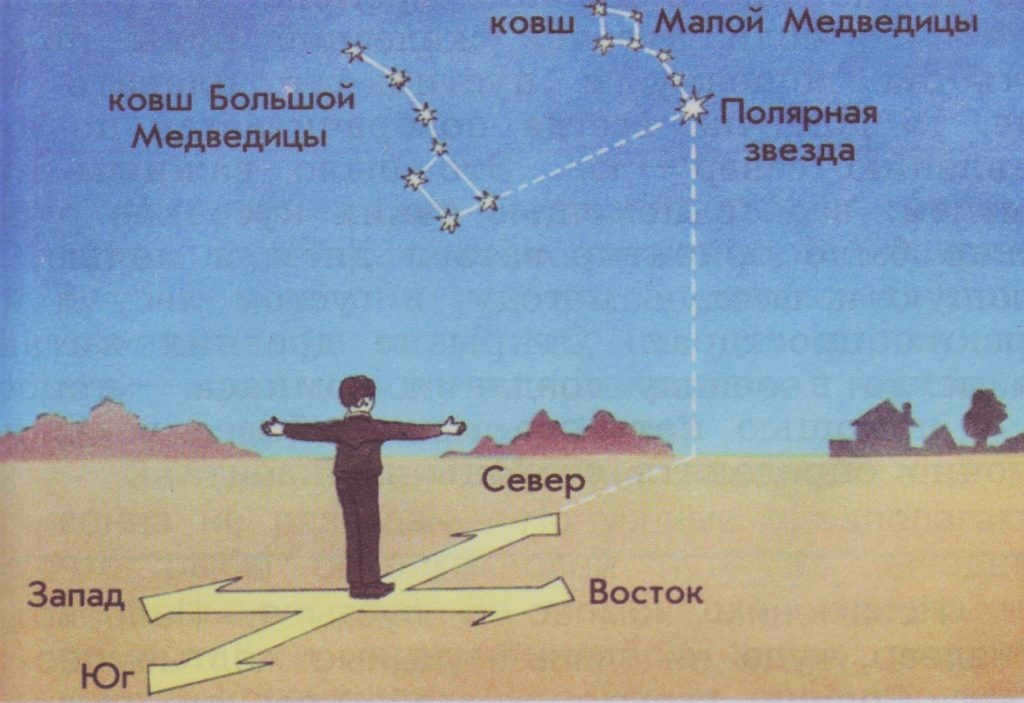
Thanks to its luminosity, the Great Bear has served as a reliable point of reference for humans since ancient times. Depending on the season, experienced navigators using this constellation could ascertain the positions of the cardinal directions and navigate accordingly.
Most significantly, the Great Bear aids in locating Polaris in the night sky. By mentally drawing a straight line from this celestial body to the Earth, one can accurately determine the direction of north along this perpendicular line.
Fascinating fact:In ancient Russia, this constellation was known as the Horse due to its distinctive shape. The pole star was regarded as a peg to which the animal was tethered.
If you can identify the north, you can easily figure out the other directions: south – behind you, west – to your left, east – to your right. To help navigate in space, there are two stars, Arcturus and Spica, which are located in the south. During the Middle Ages, sailors relied on these stars to accurately determine their course while out at sea in the dark night sky.
The great thing about using the Big Dipper as a reference point is that it occupies a large area in space. Even if the weather is cloudy, there’s a good chance that at least a portion of the constellation will be visible in the sky. This will be enough to determine the location of the north.
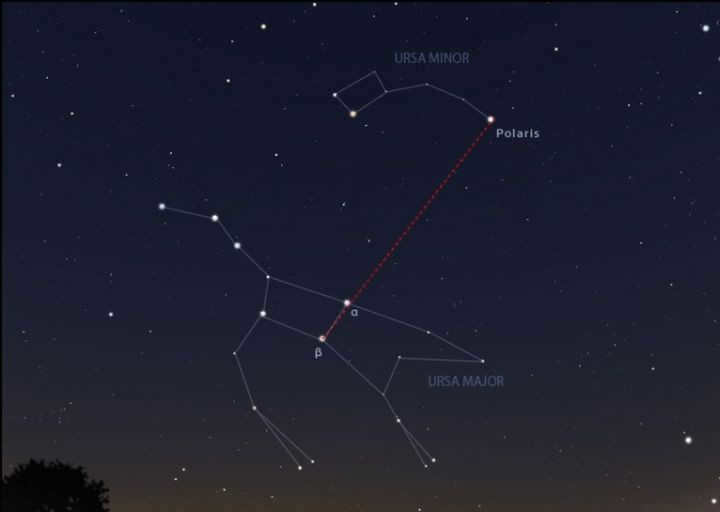
The constellation known as Ursa Major features a prominent asterism called the Bucket of the Big Dipper. Similarly, locating the Bucket of the Ursa Minor constellation is a straightforward task. By drawing a straight line between the stars Merak (β) and Dubhe (α) in the Big Dipper, which together form the wall of the Bucket, one can easily pinpoint Polaris, the brightest star in the Little Bear constellation.
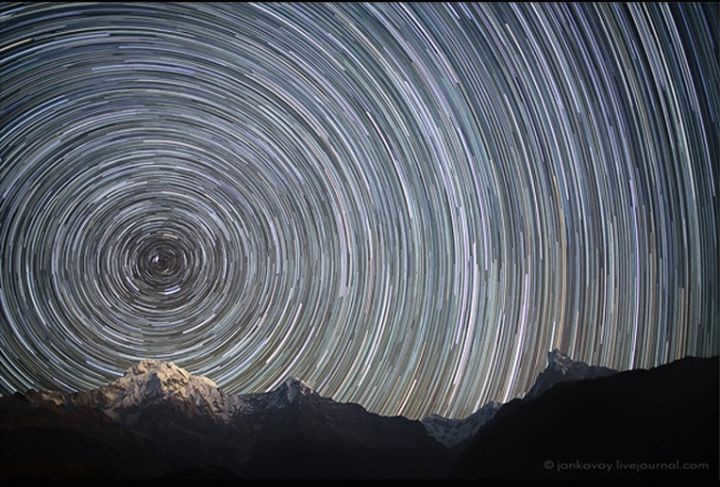
In the current era, Polaris is located in close proximity to the North Pole and, as a result, remains virtually motionless as the stars rotate in the sky on a daily basis.
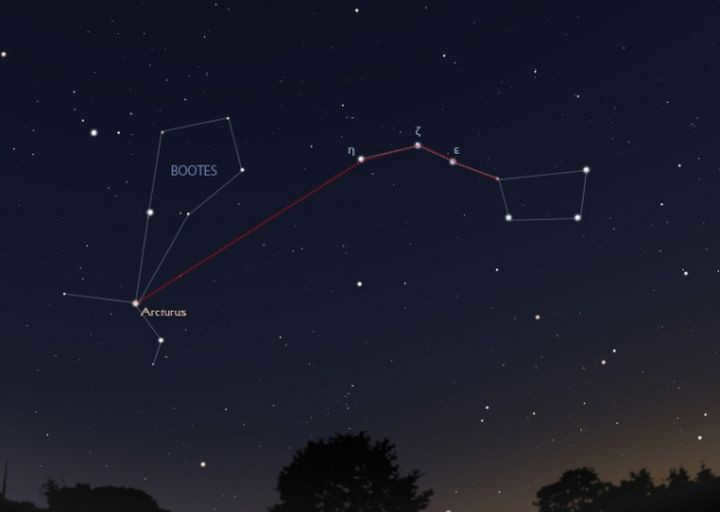
When you trace a curve that passes through the three stars forming the handle of the Big Dipper, it leads you to Arcturus Volopas (Bootes), which happens to be one of the most luminous stars in the entire sky.
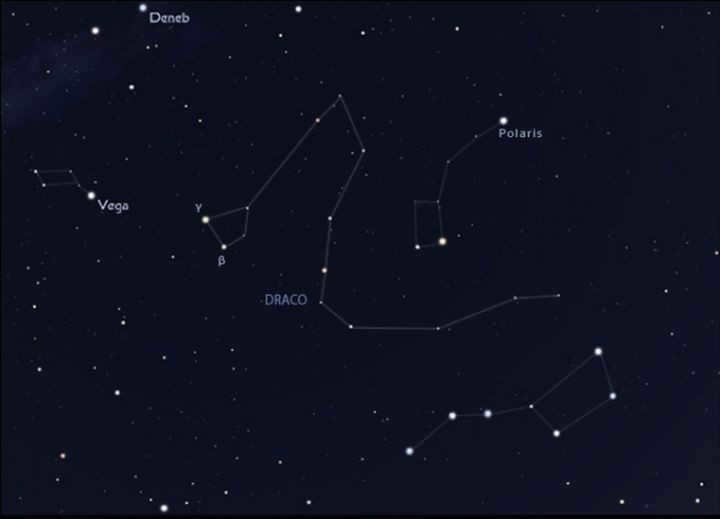
The Dragon constellation is one of the most impressive constellations in the sky, located between the Big and Little Bears. If you look between the Bucket of the Little Dipper and Vega, you will spot a small irregular quadrangle known as the Dragon’s Head. The stars Etamin (α) and Rastaban (β) serve as the “eyes” of the dragon.
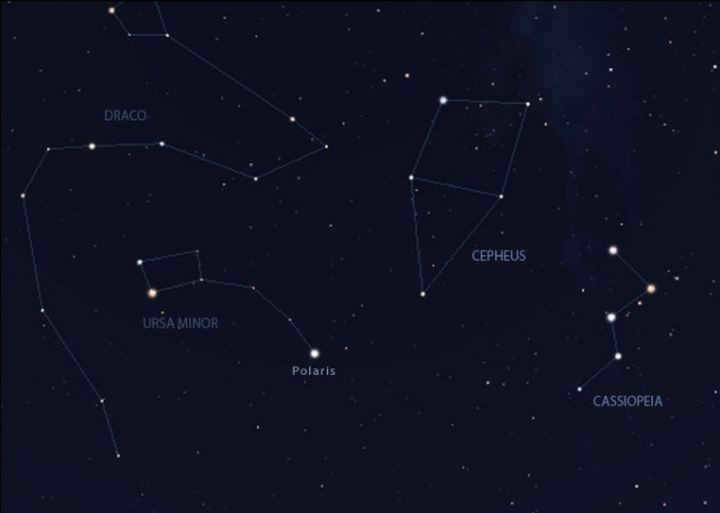
Close to the Dragon, you can observe the shining stars of Cassiopeia, which create the shapes of the letter M or W. The constellation Cepheus is also visible in Russia, although it may require some effort to spot.
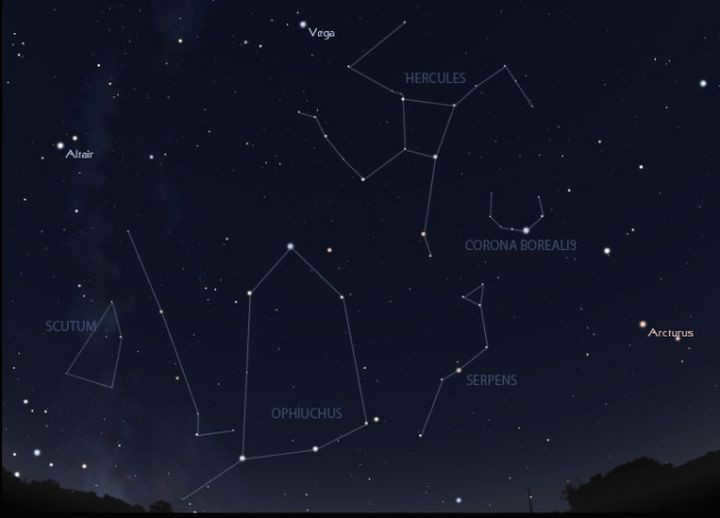
If you look between the stars Altair and Arcturus, you will come across several constellations including the Northern Crown (Corona Borealis), Serpens, Hercules, Orhiuchus, and Scutum.
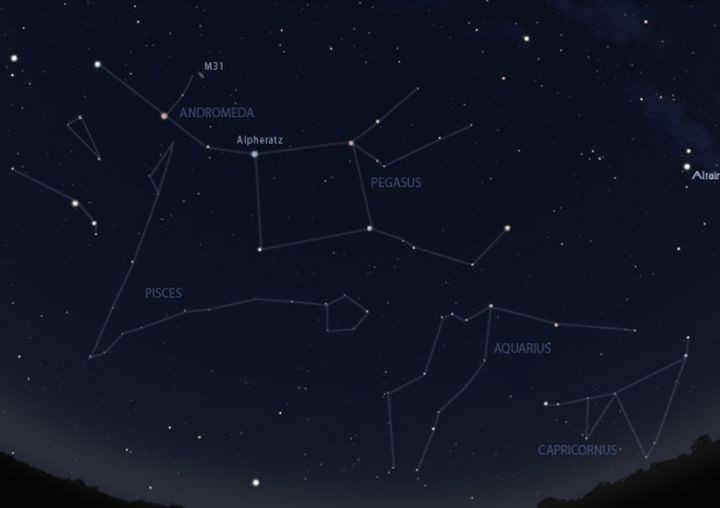
Continuing on the journey to the east, a handful of additional constellations can be observed, among them the zodiacal constellations Pegasus, Capricorn (Capricornus), Aquarius (Aquarius), and Pisces (Pisces).
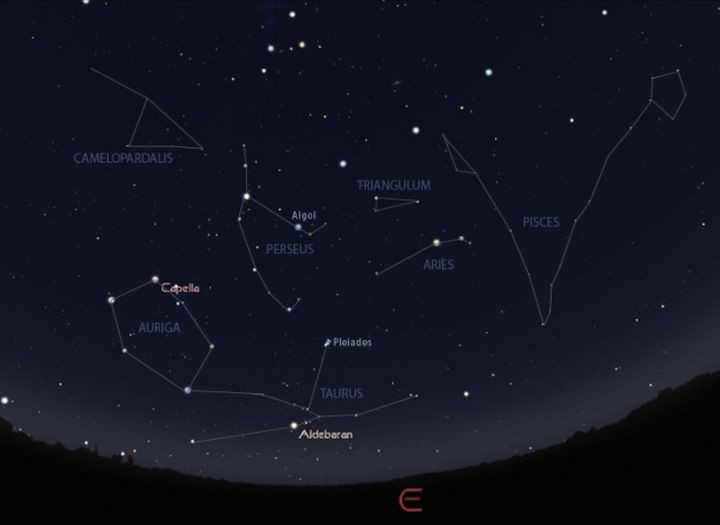
The zodiac sign Aries, the bull sign Taurus, the constellation Auriga also known as the Ascendant, the constellation Triangulum known as the Triangle, the constellation Perseus, and the constellation Camelopardalis also known as the Giraffe. The brightest star in the constellation Auriga is Capella, and in the constellation Taurus, it is Aldebaran. Algol, one of the most famous stars in the constellation Perseus, represents the “eye” of the Medusa Gorgon. The constellations Ascendant and Taurus can be observed more closely around 5 am.
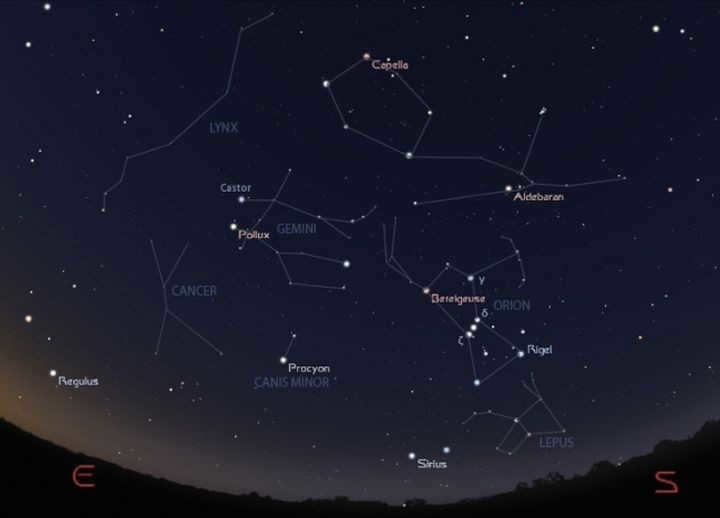
There are also other fascinating celestial objects that can be found in close proximity, such as Orion (Orion), Hare (Lepus), Gemini (Gemini), Cancer (Cancer), Little Dog (Canis Minor), and Lynx (Lynx). Orion is known for its bright stars, including Rigel, Belgeuse, and Bellatrix. The Gemini constellation is highlighted by its prominent stars, Castor and Pollux. Cancer is the most challenging constellation to spot.
Su-24 front-line bomber.
Heading to Georgia and unfortunately straight back.
Flying across the sky to Palma de Mallorca.
62 comments
Astronomy is a fascinating subject. Approximately 6 years ago, I made the decision to purchase a telescope. Initially, my friends and acquaintances would joke about it, saying that I was going to become a lunatic staring at the sky. However, when they came to visit me, they were curious to see something through the telescope. The small black telescope in the photo is the one I own. )
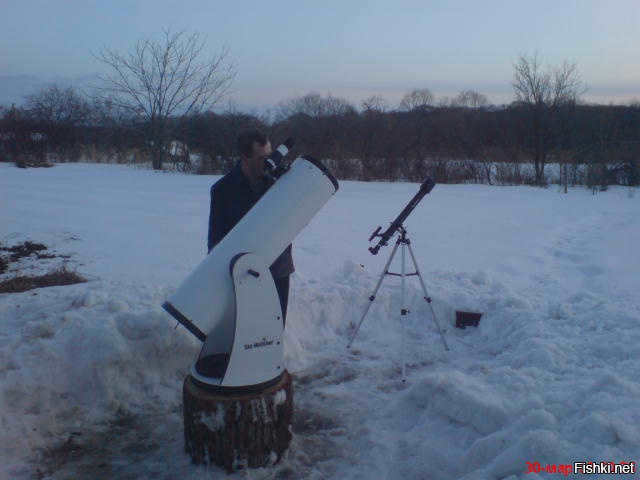
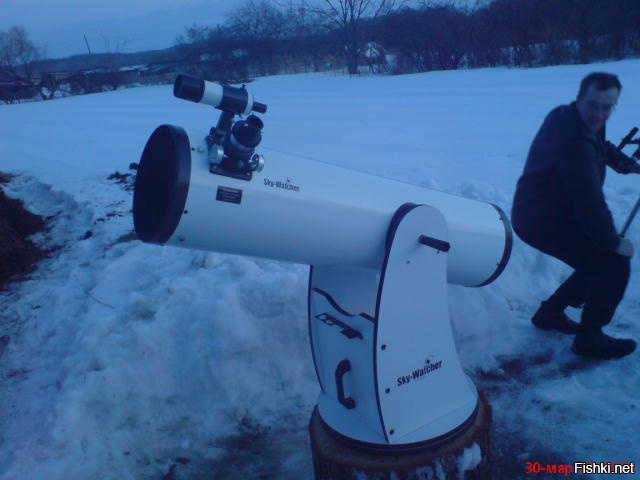
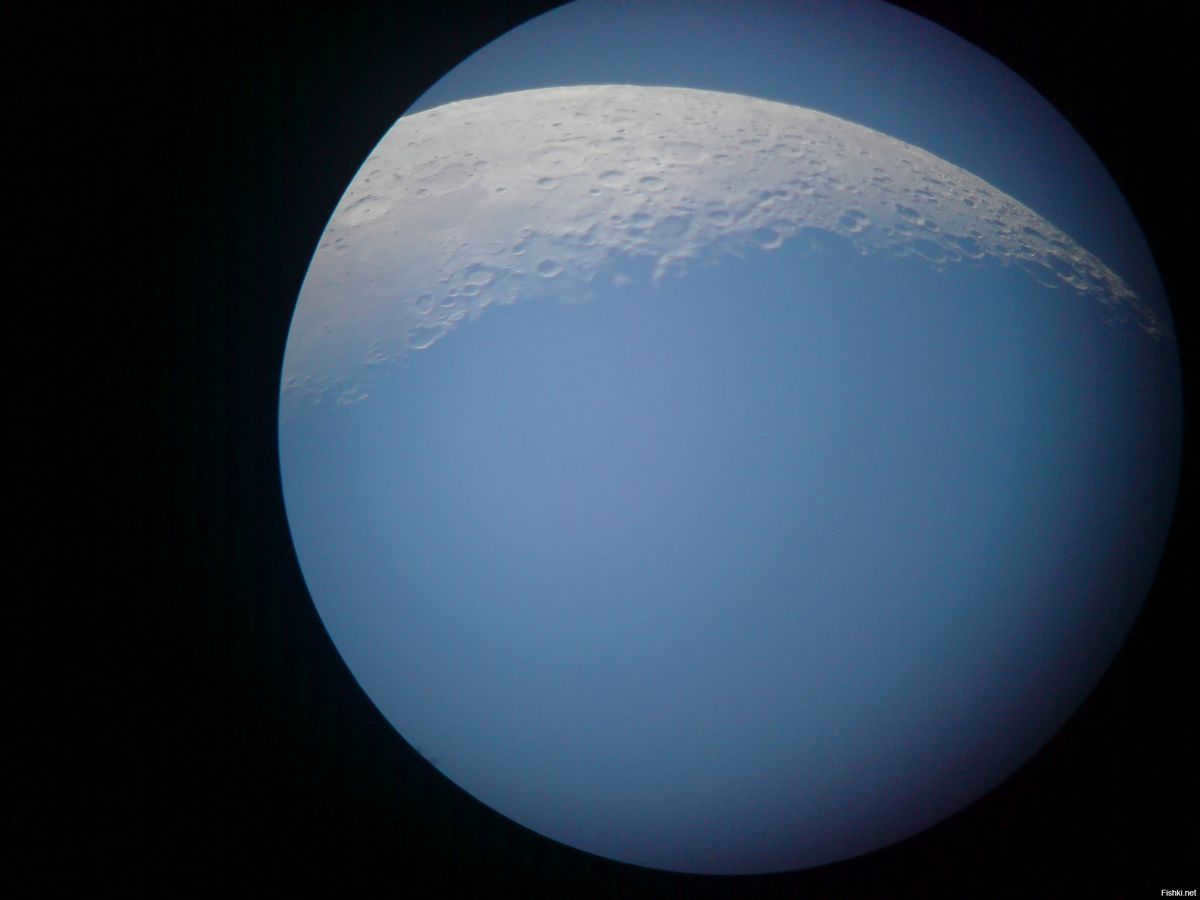
Astronomy is a fascinating subject. Approximately 6 years ago, I made the decision to purchase a telescope. Initially, my friends and acquaintances would jest at me, as if I were a lunatic planning to observe the stars. However, once I invited them over and showed them what my telescope could do, they became genuinely interested. The telescope featured in the photo is the one I own.
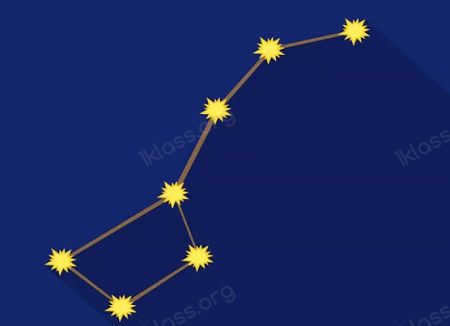
An applique can be created to represent the Big Dipper constellation. To do this, gather colored paper, cardboard, scissors, a pencil, and glue. Draw stars on yellow or silver paper.
Next, cut out the stars with scissors and affix them to a sheet of black or dark blue cardboard, which will mimic the night sky. Connect the stars together to form a shape resembling the Big Dipper constellation.
The star formation known as the Great Canine
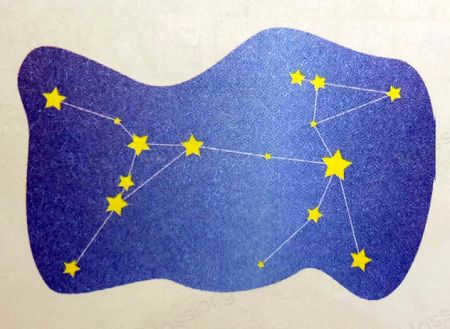
Image: the constellation of the Great Bear
The Great Bear constellation can be found in the sky of the southern hemisphere. The most prominent star in this constellation is Sirius. The best time to observe this constellation is during the months of December and January. If you connect the stars, they form a pattern that resembles a dog.
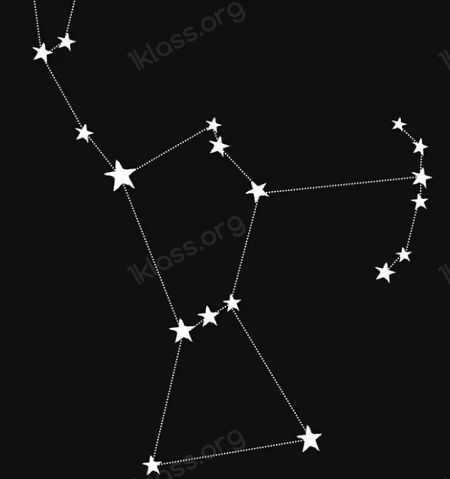
Photo: constellation Orion
The constellation Orion derives its name from a mythical hunter in ancient Greek lore. The most straightforward way to locate it in the night sky is by identifying the three stars that form Orion’s belt. These three stars are named Mintaka, Alnilam, and Alnitak.
During nighttime, when darkness envelops the surroundings, locate the ladle-shaped asterism of the Big Dipper in the celestial sphere.
Identifying the ladle-shaped asterism of the Big Dipper is easiest in the late summer or autumn. By connecting the stars of the constellation with invisible lines, a configuration resembling a ladle can be discerned.
What celestial objects are visible during the day and what becomes apparent at night?
During daylight hours, the Sun and clouds can be seen in the sky. At night, we are able to observe the Moon and stars.
The Sun, a colossal luminous sphere, is the star that radiates warmth to all inhabitants of Earth.
How can I locate the Big Dipper constellation in the night sky?
In order to locate the Big Dipper constellation in the night sky, you will need to identify a group of stars that resemble a dipper.
To save your finished homework in your bookmarks or share it on social media, simply press CTRL+D on your keyboard.





